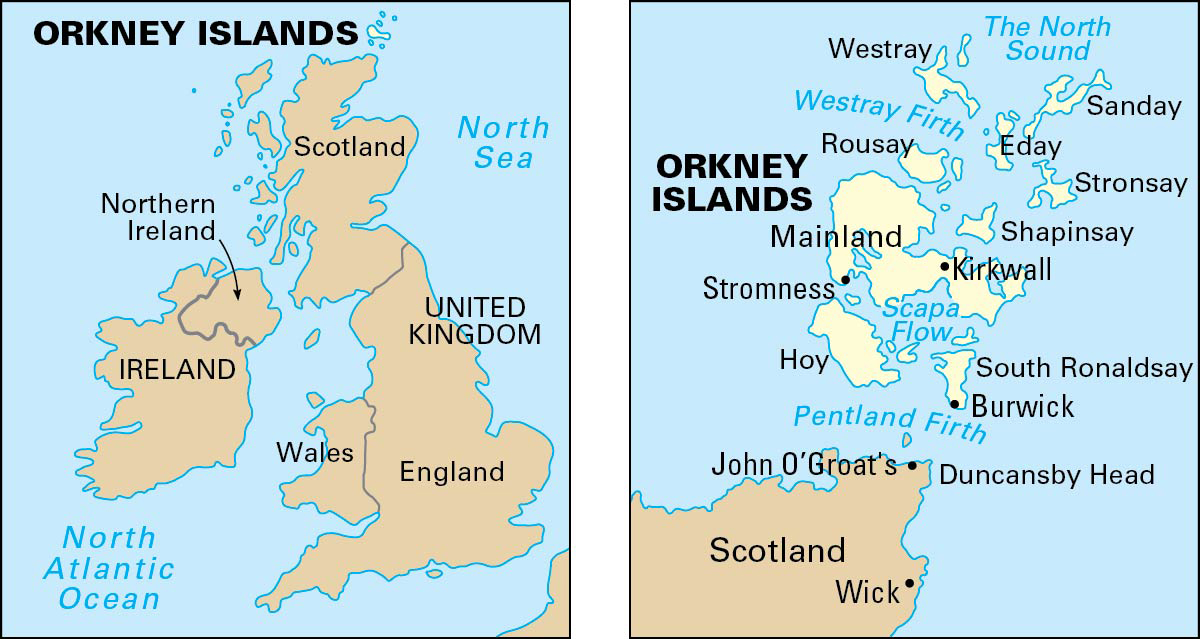Orkney Islands (pop. 21,958) are a group of islands that form part of Scotland. The islands make up a single council area, the primary unit of local government in Scotland. The islands are separated from the north coast of Scotland by the Pentland Firth, a channel about 7 miles (11 kilometers) wide. About 65 islands and some rocky isles make up the Orkney Islands, which have a total land area of about 377 square miles (976 square kilometers). Kirkwall and Stromness are the only towns. They lie on Mainland, the largest island. Nearly all the people are of Scandinavian or Scottish ancestry.

Rich soil and a mild climate help make agriculture the leading industry in the Orkney Islands. The chief products include cattle, cheese, eggs, and barley. Fishing is also an important economic activity. In addition, the islands have a major oil terminal that receives oil piped from wells in the North Sea.
Archaeological evidence indicates that people lived in the Orkney Islands about 5,000 years ago. Vikings from Norway ruled the islands from the A.D. 800’s to the 1400’s. Most of the islands’ place names are of Viking origin. Scotland (now part of the United Kingdom) acquired the Orkney Islands from Norway in 1469, when Scotland’s king, James III, married Princess Margaret of Norway and Denmark. The islands served as an important base for the British Navy during World War I (1914-1918) and World War II (1939-1945).
